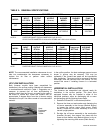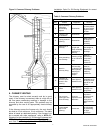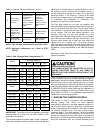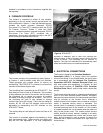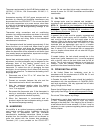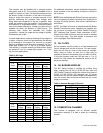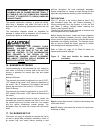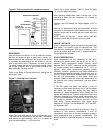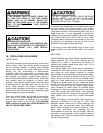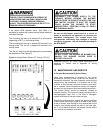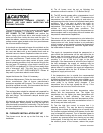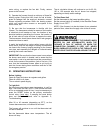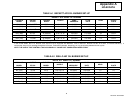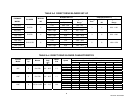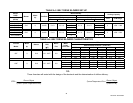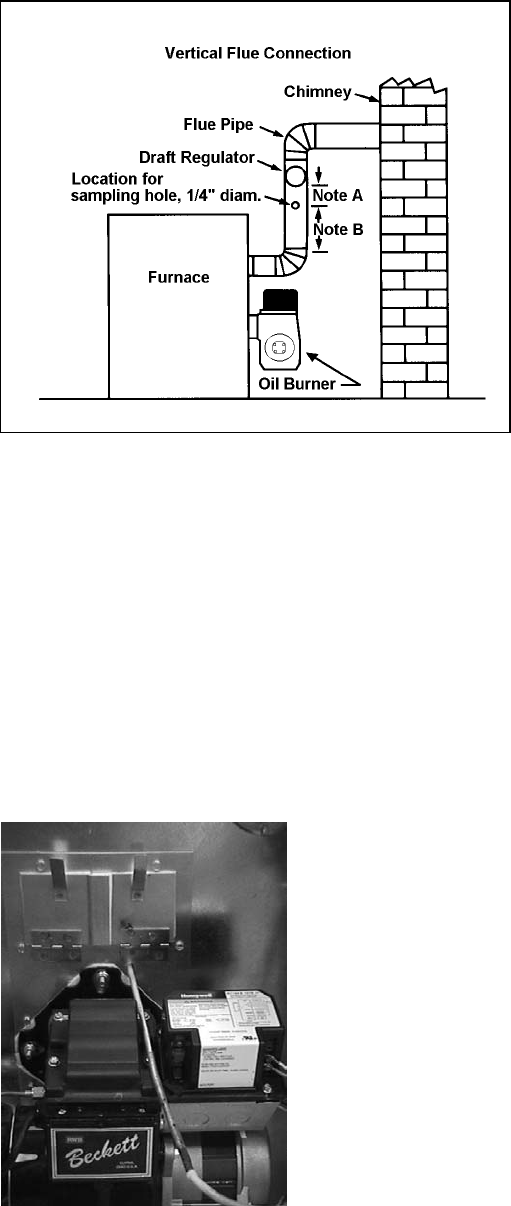
29733 R2 06/01/2003
13
Figure 6: Test port location for smoke test vertical.
PROCEDURE:
Start the burner and allow it to run at least ten minutes.
Set the air shutter to give a good flame visually. On
Beckett burners, the combustion air supply to the burner
is controlled by manipulating the air shutter on the left
side of the burner, and, if necessary, the bulk air band.
To adjust, loosen the bolt on the movable shutter. Move
the shutter gradually until a good flame (visually) has
been achieved. Re-snug the bolt.
Refer to the Riello Oil Burner Manual for setting the air
adjustment plate.
Figure 7: Checking Over-Fire Draft.
Check the initial draft setting as the furnace warms up.
The draft may be measured at the test port. The breech
draft should be approximately - 0.05” w.c. to obtain an
over fire draft reading of - 0.02 inches w.c.
Check the oil pump pressure. Refer to Table A1, page
18, for pump pressure settings.
After reaching steady state, take a smoke test. If not
indicating a trace, set the combustion air controls to
provide a trace.
Typically, the CO
2 reading will range between 11.5% to
13.5%.
After the air adjustments have been completed, and the
air shutter or air adjustment plate has been secured, take
another smoke test to ensure that the values have not
changed.
NOTE: Riello Oil Burners - When taking final test
readings be sure that the burner cover is in place.
SMOKE TEST NOTE:
If oily or yellow smoke spots are found on the smoke test
filter paper, it is usually a sign of unburned fuel. This
indicates poor combustion. This type of problem may be
caused by excess draft, excess air, or contaminated fuel.
Do not ignore this indicator.
STACK TEMPERATURE:
Stack temperature will vary depending on fuel input,
circulating air blower speed, and burner set up, etc. In
general, stack temperature should typically range
between 380°F to 550°F, assuming that the combustion
air is approximately room temperature (65°F - 70°F). In
general, lower stack temperature indicates greater
efficiency; however, excessively low stack temperature
can lead to condensation forming in the chimney and / or
venting. Sulphur and similar contaminants in the fuel oil
will mix with condensation to form acids. Acids and
resultant chemical salts will cause rapid deterioration of
the chimney and venting components, and may attack
the furnace.
If the flue gases are below the range, it may be
necessary to slow down the blower fan. If the flue gases
are above the range, the blower fan may require
speeding up. Stack temperature varies directly with the
system temperature rise. System temperature rise is the
difference between the furnace outlet temperature and
furnace inlet temperature as measured in the vicinity of
the connection between the plenum take-offs and the
trunk ducts. Typical temperature rise values range
between 60° and 90°F for the Model 80F, 55°F and 85°F
for the Model 120F.
If the venting from the furnace to the chimney is long, or
exposed to cold ambient temperatures, it may be
necessary to use L-Vent as the vent connector to reduce
stack temperature loss to prevent condensation. The
venting should be inspected annually to ensure that it is
intact.



